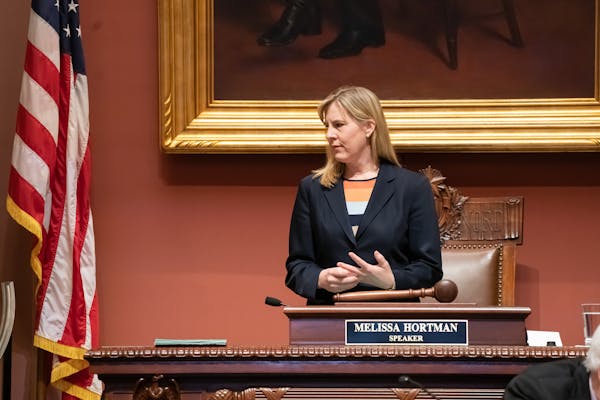Minnesota is suffering from a shortage of leadership when it comes to transportation policy. Spend any time on our roads, and you will no doubt recognize that we're struggling to keep up with the needed maintenance on our transportation infrastructure. What continues to confound Minnesotans is why legislators seem to be more focused on assigning political wins and losses than fixing an issue that knows no partisan home. Democrats and Republicans are equal in their belief that safe roads are important.
The legislators who are currently touring the state on a bonding tour to look at public infrastructure projects for possible one-time funding are overwhelmed with options in need of funding. The projects can't all fit into one bonding bill. While funding transportation with one-time money is essential, it is also only one part of the bigger equation.
What we need, as Minnesotans, is a more comprehensive approach to transportation, which will require a stand-alone transportation bill to address future needs.
As our commute times get longer and the number of traffic-related deaths continue to climb, we grow increasingly impatient. With thickening congestion on metro-area roads and rural two-lane highways becoming the deadliest place to drive, we begin to get angry. And when legislators decide that they would rather play partisan hot potato than actually step up and lead on these issues, we all become the losers in a game that needn't be partisan.
Back in 2008, Minnesota legislators did the right thing when they voted to increase transportation user fees like the gas tax to create the necessary resources to repair our transportation system statewide. The bill was vetoed by Gov. Tim Pawlenty, but legislators were resolute enough in their position that they overrode the veto in a bipartisan manner. At the time, the bill was seen as a 10-year plan for addressing the state's needs. It allowed for a lot of improvements over that time period, including new bridges to replace fracture-critical ones like the I-35W bridge, expanded highways, better local roadways and better transit service in more of the state.
Thanks to the 2008 Transportation Funding Plan, we saw the expansion of I-494, a new Hwy. 212 from Eden Prairie to Chaska, improvements to Hwy. 169 and other major repair work. The Legislature focused funding on replacing fracture-critical bridges, including a new bridge in Hastings, a new Lafayette Bridge and others around the state. Today we are benefiting from new transitways, including Green Line light rail and additional opportunities for bus rapid transit.
Unfortunately, our infrastructure ages just like our population, and most of our roads and bridges were built after World War II. More bridges are wearing out, more pavement is plagued with potholes and the costs continue to increase. Building a new bridge like the St. Croix River Crossing or addressing bottlenecks on the freeway system costs hundreds of millions of dollars for each project, and the 10-year transportation plan passed in 2008 has run out of steam. It's time for a new 10-year plan to address the critical projects that need funding today.
Legislators on both sides of the aisle recognize the importance of shoring up our key transportation corridors as a way to increase our productivity and strengthen our economy. Doing so will help producers in the agricultural and manufacturing sectors to get their products to market easier and allow people to get where they need to be quicker, and more safely. But while politicians agree on what needs to be done, they are allowing partisan rancor to get in the way of these important improvements to the lives of all Minnesotans.
We know how to fix our transportation problems; it just takes leaders committed to taking bold action to be the champions we need to get our state moving again. It is time for the Legislature to create a new 10-year transportation plan to help move us forward as a state, and reconnect our communities for a safer Minnesota.
Margaret Donahoe is executive director of the Minnesota Transportation Alliance.
Readers Write: Caucus system, state Sen. Nicole Mitchell, voting for RFK Jr.
Turn off cellphones in state's classrooms
How many hostages are still alive? Hamas doesn't seem to know


